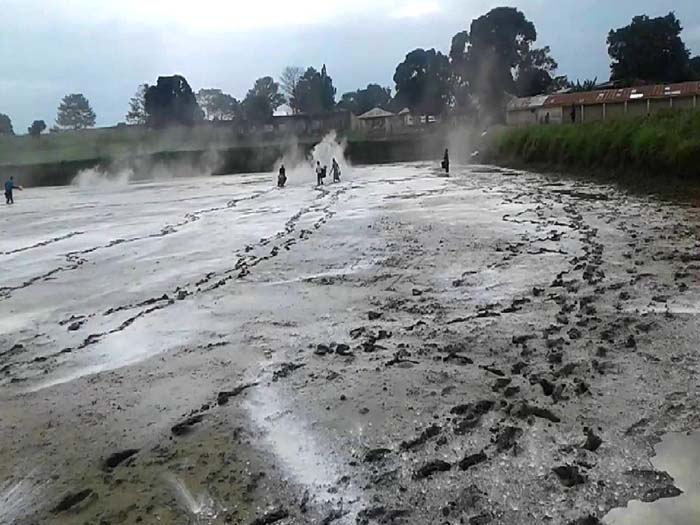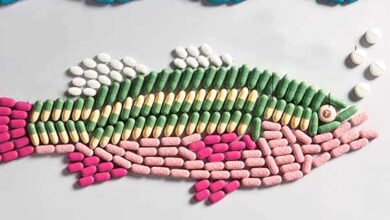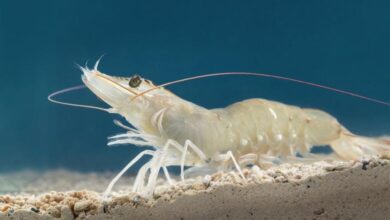
One of the crucial processes in pond preparation and treatment is liming. The majority of the soil in your ponds has acidic properties, which affect the alkalinity and hardness of the water. Liming is the use of different acid-neutralizing substances like calcium and magnesium to improve the cleanliness and health of the pond ecosystem. Farmer face this type of problem mostly. They can’t determine when, how or what lime should applied in their fish ponds. This article will help you how to use lime in your fish pond for good production.
The amount of liming material required to:
- To neutralize the acidity of the pond bottom soil and
- To raise the overall alkalinity of the water above at least 25 mg/l CaC03 is known as the lime requirement of ponds.
Relationship between liming and alkalinity:
You may also be familiar with the term “total hardness of water,” which largely refers to the concentration of calcium and magnesium in the water. Total hardness and total alkalinity are not significantly different in waters suitable for fish farming. As a result, hard water (high hardness) typically has a high alkalinity, and soft water (low hardness), with little calcium and/or magnesium, typically also has a low alkalinity.
The impact on the overall alkalinity of the pond water is one of the most significant effects and one that can be measured and used to control liming.
The total alkalinity (TA) of water is a measurement of the total concentration of alkaline compounds like calcium (Ca) and magnesium (Mg) in the form of carbonates and bicarbonates. Calcium bicarbonates are typically more prevalent in natural waters.
While raising fish, total alkalinity is crucial. It reveals how much pH can change in water as well as how readily available carbon dioxide. It is needed for the growth of microscopic algae. The overall alkalinity of the water can affect the toxicity of some compounds, such copper sulfate.
The local characteristics of the soils and water, as well as how your farm is run, affect the total alkalinity. Liming, which adds calcium material to the soil, has an immediate impact on it.
High alkalinity water is also thought to have a good potential for absorbing disturbance. Chemically, it is rather stable, and there aren’t many changes in quality over the day.
Essentiality of lime in your fish pond:
Liming is a popular activity. Liming is very much essential for your aquaculture pond management.
- It helps to raise pH of your pond and act as a buffer against daily pH changes.
- During this procedure, the soil structure of your pond is improved, the water quality is stabilized, and the fertilizing agents work more effectively to boost the food supply.
- Lime is frequently added in modest amounts and frequently to shrimp ponds in an effort. Farmers like you should use lime to control pH and phytoplankton abundance.
- Lime helps to remove phosphate from water by raising pH and calcium levels. Increasing pH also causes the water’s carbon dioxide to be eliminated. It is believed that fewer carbon dioxide and phosphate limits phytoplankton photosynthesis and prevents significant daily pH fluctuations.
- The bottom soil structure of your fish pond will be improved, decomposition of the organic matter will be accelerated.
- All of these factors will result in a faster and greater release of minerals and nutrients from the bottom soil back into the pond water, together with a reduced demand for dissolved oxygen.
- The effects on pond water are:
- pH will increase and become more stable,
- total alkalinity will increase,
- providing more carbon dioxide for photosynthesis,
- calcium content will increase, to be used by plants, certain toxic substances such as iron compounds will be neutralized and precipitated as pH increases; and
- excess organic matter will precipitate, decreasing the demand for dissolved oxygen in the pond water.
- In addition to a decreased need for dissolved oxygen, all of these characteristics will cause a quicker and bigger release of minerals and nutrients from the bottom soil into the pond water.
The lime requirement therefore varies, depending on:
- The acidic character of the soil, which calls for more lime than neutral soil;
- The composition of the bottom soil, which calls for more lime than sandy soil;
- The water’s total alkalinity; harder water with a higher TA needs more lime than soft water does.
Choosing chemicals for pond liming:
- Three chemicals are generally used for liming in fish ponds:
- Calcium carbonate, CaC03 or agriculture lime
- Calcium hydroxide, Ca (OH)2, or hydrated lime
- Calcium oxide, CaO, or quicklime
- Each of them yields a distinct kind of lime, which varies in cost, fish toxicity, and pond liming efficiency. It is advised to purchase the smallest feasible particles.
The proper liming requirements determining process for your pond:
New ponds typically need more liming than older ponds that have received regular treatment, such once a year. Hence, a variety of treatments are available at various dosages, depending on the situation. One of these is:
- Initial pond treatment
- routine pond bottom treatment, and
- pond water treatment during hazardous condition
Liming filled ponds
If the liming substance is diluted in water prior before being tossed into the pond, it will be simpler to disperse it equally. The lime can be diluted using buckets, wheelbarrows, or repurposed steel drums.
You can use a big wooden spoon to apply lime that has been diluted in water. Small ponds allow for this to be done right from the banks, but larger ponds may call for the use of a boat or a floating platform. You should distribute lime all over the pond properly.
Agriculture lime will work best when pH is close to neutral. Quicklime and hydrated lime are the best options to quickly raise pH if it is really low.
Lime has a significant role in improving water quality. In the pond, it works wonders as a conditioner. It contributes significantly to the enhancement of pond sanitation. Liming also boosts the fish pond’s productivity. Liming is crucial for promoting the healthy development of fish in your pond.
Farhana Islam
Agriculturist, Researcher




